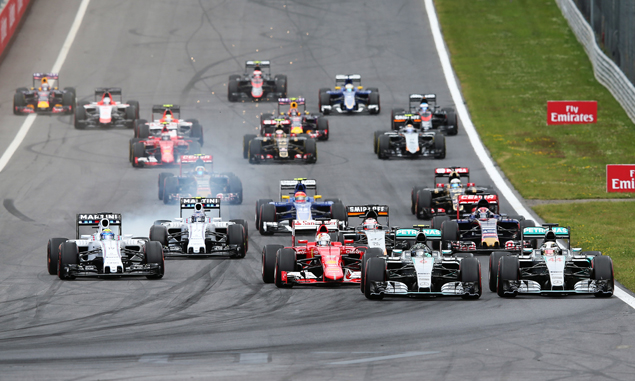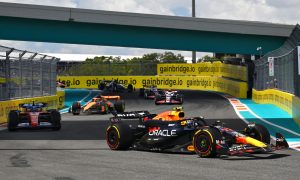
The FIA has clarified the restrictions it will impose on driver aids in 2016 relating to radio and pit board communications.
Article 20.1 of the sporting regulations states 'The driver must drive the car alone and unaided', with the regulation set to be enforced more strictly next season. In preparation for the change, the FIA sent a technical directive to all of the F1 teams last weekend, giving a list of specific messages which will be permitted in 2016.
The majority of the allowed messages relate to the state of the car, pit decisions and competitor information, with the main focus of the restrictions designed to prevent teams from telling drivers which changes to make to the car to optimise its performance. Messages relating to fuel saving are also banned.
The full list of permitted messages is as follows:
- Indication of a critical problem with the car, e.g. puncture warning or damage.*
- Indication of a problem with a competitor’s car.*
- Instruction to enter the pit lane in order to fix or retire the car.*
- Marshalling information (yellow flag, red flag, race start aborted or other similar instructions or information from race control).*
- Wet track, oil or debris in certain corners.*
- Instructions to swap position with other drivers.*
- Acknowledgement that a driver message has been heard.
- Lap or sector time detail.
- Lap time detail of a competitor.
- Gaps to a competitor during a practice session or race.
- “Push hard”, “push now”, “you will be racing xx” or similar.
- Helping with warning of traffic during a practice session or race.
- Giving the gaps between cars in qualifying so as to better position the car for a clear lap.
- Tyre choice at the next pit stop.
- Number of laps a competitor has done on a set of tyres during a race.
- Tyre specification of a competitor.
- Information concerning a competitor’s likely race strategy.
- Safety Car window.
- Driving breaches by team driver or competitor, e.g. missing chicanes, running off track, time penalty will be applied etc.
- Notification that DRS is enabled or disabled.
- Dealing with a DRS system failure.
- Change of front wing position at the next pit stop.
- Oil transfer.
- When to enter the pits.
- Reminders to check for white lines, bollards, weighbridge lights when entering or leaving the pits.
- Reminders about track limits.
- Passing on messages from race control.
- Information concerning damage to the car.
- Number of laps remaining.
- Test sequence information during practice sessions, e.g. aero-mapping.
- Weather information.
*These are the only messages that may be passed to the driver, whilst he is in the car and on the track, from the time the car leaves the garage for the first time after the pit lane is open on the day of the race until the start of the race
New regulations relating to the start procedure are already being introduced at this weekend's Belgian Grand Prix, with the clutch bite point having to have been fixed by the time drivers leave the pits to head to the grid. Teams are also limited in the information they can give to their drivers over the radio ahead of the start of the race.
At present, drivers have two clutch paddles with which to engage the clutch bite point and launch the car. From 2016, the FIA's technical directive states "only a single clutch operating device may be used for the start". The plan is then to move to a standardised clutch in 2017.
Chris Medland's Belgian Grand Prix preview
Click here for a gallery of the biggest crashes at Spa-Francorchamps
Keep up to date with all the F1 news via Facebook and Twitter





